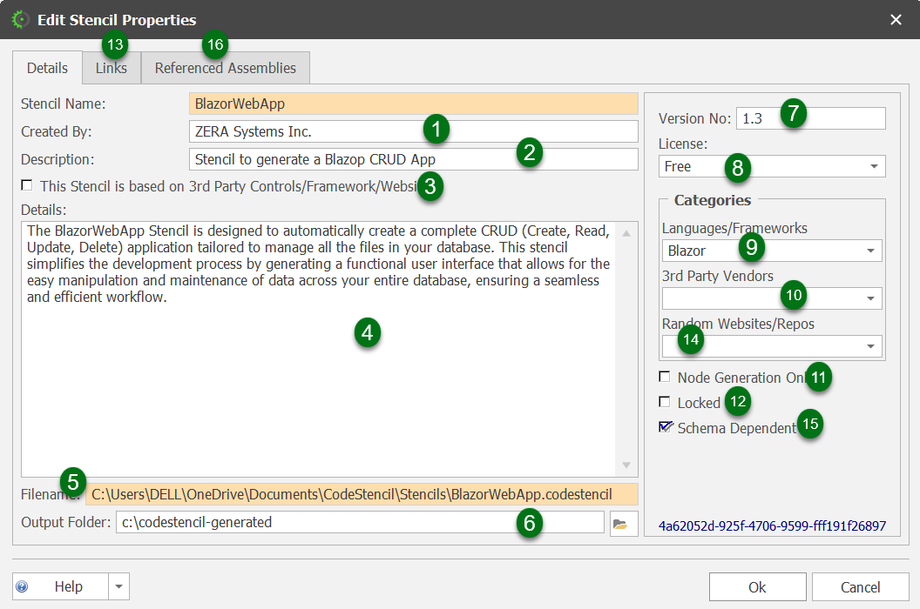Properties
You can access the Stencil properties in 3 ways:
(1) Double-click on the root folder, (2) From the context menu, (3) From the File menu
Stencil Properties Form
- Created By: Identifies the creator of the Stencil. It is pre-filled with the username from the machine.
- Description: This describes the Stencil.
- 3rd Party Controls/Framework/Websites:
- Details: This just contains more detailed information on the stencil
- Filename: This is the physical filename of the Stencil file.
- Output Folder: This is the folder the code will be generated into.
- Version No: This is the version number of the Stencil.
- License: The following are options that can be selected as the license type: Free, Paid Subscription, GNU/GPL, MIT Software Licensing
- Category: The options available include; ASP .NET, Blazor, WinForms/WPF, Xamarin, JavaScript/Angular/React/Vue, SQL, and Others.
- 3rd Party Vendors: The available options are: DevExpress, Infragistics, SyncFusion, Telerik
- Node Generation Only: You check this option when you do not want to generate an entire Stencil, and would rather generate one node at any given time. A typical case would be when you have snippets of code in those nodes for specific blocks of unrelated code and you just want to generate ad-hoc based on the specific code you want. When you check this, the code generation button on the toolbar becomes disabled, so then, only one node at a time can be generated.
- Locked: The usual practice is to lock a Stencil before shipping so that all the nodes are set to read-only. This will help prevent your end-users from making unintended changes. You create a project from a stencil and the project is what you should make changes to.
- Links: This tab allows you to specify links to Release Notes, Getting Started, and More Information (if any).
- Random Websites:
- Schema Dependent: When checked, this indicates that this stencil has a database component meaning that it has dependencies on the Schema Dictionary because part of its code generation cycle involves accessing tables and columns.

